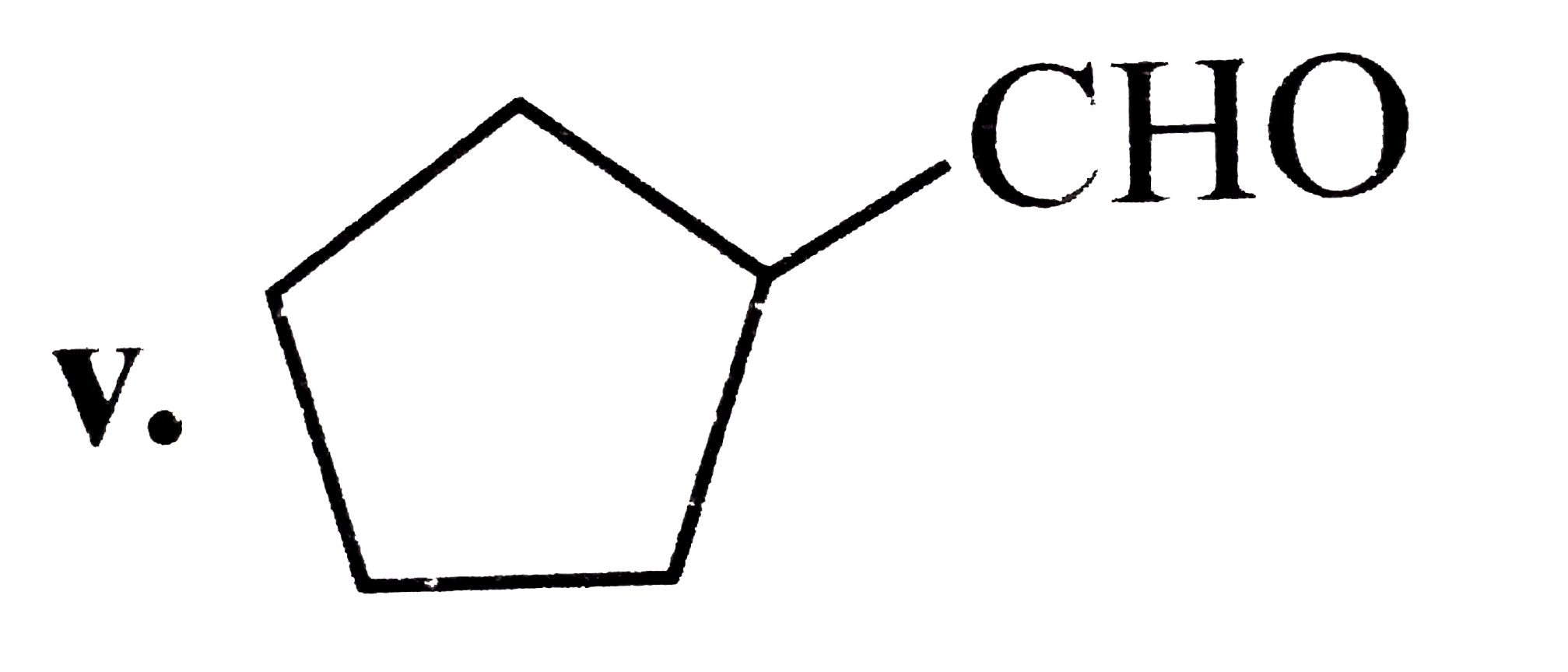Write the IUPAC names of the following ketones and aldehydes. Wherever possible, give also common names.
CH3CH2CHBrCH2CH(CH3)CHO
To determine the IUPAC name and common name of the compound CH₃CH₂CHBrCH₂CH(CH₃)CHO, we can follow these steps:
Step 1: Identify the Structure
First, we need to visualize the structure of the compound. The given formula indicates:
- A straight chain of carbon atoms.
- An aldehyde functional group (-CHO) at one end of the chain.
- A bromine (Br) substituent and a methyl (CH₃) group on the carbon chain.
Step 2: Count the Carbon Atoms
Count the number of carbon atoms in the longest continuous chain:
- The chain contains 6 carbon atoms.
Step 3: Identify the Functional Group
The functional group present is an aldehyde (-CHO), which is always given the highest priority in naming.
Step 4: Number the Carbon Chain
Number the carbon chain starting from the end closest to the aldehyde group:
1. The aldehyde carbon is carbon 1.
2. Continuing to number the carbons gives us:
- C1: -CHO (aldehyde)
- C2: CH₂
- C3: CHBr (bromine substituent)
- C4: CH₂
- C5: C(CH₃) (methyl group on this carbon)
- C6: CH₃
Step 5: Identify and Name the Substituents
- There is a bromine substituent on carbon 3 (C3).
- There is a methyl substituent on carbon 5 (C5).
Step 6: Write the IUPAC Name
Combine the information:
- The longest chain is hexane (6 carbons).
- The substituents are named and numbered:
- Bromine at C3: 3-bromo
- Methyl group at C5: 5-methyl
- The aldehyde suffix is added to the base name.
Thus, the IUPAC name is:
3-bromo-5-methylhexanal
Step 7: Determine the Common Name
For the common name:
- The common name can be derived based on the positions of the substituents and the main chain.
- The common name can be expressed as:
gamma-bromo-alpha-methylhexanal
Final Answer
- IUPAC Name: 3-bromo-5-methylhexanal
- Common Name: gamma-bromo-alpha-methylhexanal
---
First, we need to visualize the structure of the compound. The given formula indicates:
- A straight chain of carbon atoms.
- An aldehyde functional group (-CHO) at one end of the chain.
- A bromine (Br) substituent and a methyl (CH₃) group on the carbon chain.
Count the number of carbon atoms in the longest continuous chain:
- The chain contains 6 carbon atoms.
The functional group present is an aldehyde (-CHO), which is always given the highest priority in naming.
Number the carbon chain starting from the end closest to the aldehyde group:
1. The aldehyde carbon is carbon 1.
2. Continuing to number the carbons gives us:
- C1: -CHO (aldehyde)
- C2: CH₂
- C3: CHBr (bromine substituent)
- C4: CH₂
- C5: C(CH₃) (methyl group on this carbon)
- C6: CH₃
- There is a bromine substituent on carbon 3 (C3).
- There is a methyl substituent on carbon 5 (C5).
Combine the information:
- The longest chain is hexane (6 carbons).
- The substituents are named and numbered:
- Bromine at C3: 3-bromo
- Methyl group at C5: 5-methyl
- The aldehyde suffix is added to the base name.
3-bromo-5-methylhexanal
For the common name:
- The common name can be derived based on the positions of the substituents and the main chain.
- The common name can be expressed as:
gamma-bromo-alpha-methylhexanal
- IUPAC Name: 3-bromo-5-methylhexanal
- Common Name: gamma-bromo-alpha-methylhexanal
Topper's Solved these Questions
- ALDEHYDES, KETONES AND CARBOXYLIC ACIDSBOOK - ICSECHAPTER - ALDEHYDES, KETONES AND CARBOXYLIC ACIDSEXERCISE - ISC EXAMINATION QUESTIONS (PART-II DESCRIPTIVE QUESTIONS) (CARBOXYLIC ACIDS)
99 Videos
- ALCOHOLS, PHENOLS AND ETHERS BOOK - ICSECHAPTER - ALCOHOLS, PHENOLS AND ETHERS EXERCISE - ISC EXAMINATION QUESTIONS
25 Videos
- APPENDIX II ( TYPICAL CONVERSIONS)BOOK - ICSECHAPTER - APPENDIX II ( TYPICAL CONVERSIONS)EXERCISE - AROMATIC CONVERSIONS
98 Videos
Similar Questions
Write the IUPAC names of the following ketones and aldehydes. Wherever possible, give also common names.
PhCOPh
View SolutionWrite the IUPAC names of the following ketones and aldehydes. Wherever possible, give also common names.
PhCOPh
View SolutionWrite the IUPAC names of the following ketones and aldehydes. Wherever possible, give also common names.
PhCOPh
View SolutionWrite the IUPAC names of following ketones and aldehydes. Wherever possible, give common nemes also.
i. CH3CO(CH2)4CH3
ii. CH3CH2CHBrCH2CH(CH3)CHO
iii. CH3(CH2)5CHO
iv. Ph−CH=CH−CHO
v.
vi. PhCOPh
View SolutionWrite the IUPAC names of the following ketones and aldehydes. Wherever possible, give also common names.
CH3(CH2)5CHO
View SolutionWrite the IUPAC names of following ketones and aldehydes. Wherever possible, give common nemes also.
i. CH3CO(CH2)4CH3
ii. CH3CH2CHBrCH2CH(CH3)CHO
iii. CH3(CH2)5CHO
iv. Ph−CH=CH−CHO
v.
vi. PhCOPh
View SolutionWrite the IUPAC names of the following ketones and aldehydes. Wherever possible, give also common names.
Ph−CH=CH−CHO
View SolutionWrite the IUPAC names of the following ketones and aldehydes. Wherever possible, give also common names.
Ph−CH=CH−CHO
View SolutionWrite the IUPAC names of following ketones and aldehydes. Wherever possible, give common nemes also.
i. CH3CO(CH2)4CH3
ii. CH3CH2CHBrCH2CH(CH3)CHO
iii. CH3(CH2)5CHO
iv. Ph−CH=CH−CHO
v.
vi. PhCOPh
View SolutionWrite the IUPAC names of the following ketones and aldehydes. Wherever possible, give also common names.
CH3CO(CH2)4CH3
View Solution
